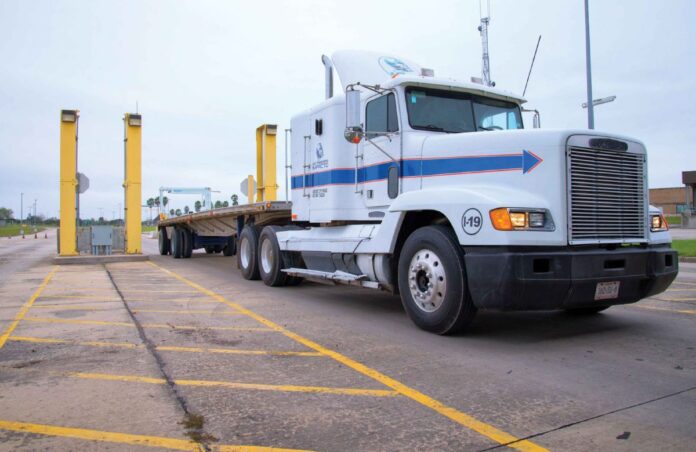LOS INDIOS — Nearly 24 years after it opened, area leaders still are working to boost toll revenues at the Free Trade Bridge.
Officials with Cameron County, Harlingen and San Benito — the bridge’s three partners — are trying to drive up truck traffic at the span once dubbed “the bridge to nowhere.”
Now, officials are trying to build a cold storage facility to draw produce trucks to the bridge.
Meanwhile, they will request Tamaulipas officials market the bridge in Mexico, County Judge Pete Sepulveda said.
On Nov. 1, 1992, the $40 million bridge opened, marking the signing of the North American Free Trade Agreement.
As part of an agreement, the cities of Harlingen and San Benito each fund a fourth of the bridge’s operating costs, while Cameron County pays the remainder.
For many in Harlingen and San Benito, the bridge was a dream come true.
“City leaders in San Benito and Harlingen worked for 50 years to get that bridge built,” Harlingen Mayor Chris Boswell said.
But nearly a quarter of a century after it opened, the bridge remains drastically underutilized, continuing to generate significantly lower toll revenues than Cameron County’s two other bridges — Veterans International Bridge and Gateway International Bridge.
“We’re operating at probably a 20 percent capacity,” Sepulveda said. “We probably have 20 percent of the traffic that we can handle.”
Several factors are behind the bridge’s low performance.
Officials consider Mexico’s drug violence a major factor.
Since the onset of drug violence in 2008, the bridge’s revenues have fallen.
“Some of the issue relates to security — you’re away from larger population areas,” Boswell said.
The bridge’s position along the Rio Grande is another factor behind its struggle to draw a healthy traffic flow.
While the county’s other international bridges directly lead to Matamoros, the Free Trade Bridge runs into rural roadways that wind to the small town of Lucio Blanco.
“There’s no major population center on the Mexican side and I think that contributes,” Boswell said.
While an industrial park stands on the bridge’s U.S. side, the Mexican side offers no counterpart.
“A lot of it is (lack of) infrastructure on the Mexican side — (lack of) proper roads, access and utilities to build warehouses next to the bridge,” Sepulveda said.
Some argue Brownsville’s international bridges draw truck traffic away from the Free Trade Bridge.
After the Veterans Bridge opened in 1999, the Free Trade Bridge posted its first drop in revenue, falling from $1.5 million in 1999-2000 to $1.43 million in 2000-2001.
Faced with falling revenues since 2008, area leaders continue to work to drive up truck traffic.
Last week, Harlingen city commissioners approved an agreement with Cameron County and San Benito to share costs to build a $414,000, 75-foot by 30-foot cold storage facility at the bridge.
Raudel Garza, chief executive officer of the Harlingen Economic Development Corporation, said the bridge needs a cold storage unit to draw produce trucks.
The cooler would help preserve produce during customs inspections that could take two to four hours, County Administrator David Garcia said.
“This is just a start,” Sepulveda said. “Hopefully, it grows into a much larger facility.”
Sepulveda said area leaders will request Tamaulipas officials launch a marketing campaign to advertise the bridge in Mexico.
“We have to meet with Tamaulipas and make sure they make investments as well,” Sepulveda said.
Local officials want Tamaulipas to spread the word to truckers about the bridge’s short waiting lines, he said.
“They can come to the Free Trade Bridge and waiting lines are 10 times less,” Sepulveda said. “A lot of people don’t know that.”
Despite falling revenues, the Free Trade Bridge has turned a profit since 1999, when its tolls reached $1.37 million.
In Harlingen, the revenue stream has helped officials build a $264,000 fund balance, City Manager Dan Serna said.
“The bridge is making money,” Boswell said. “You always like to see more.”
Garcia said the bridge is expected to pay off its remaining $400,000 debt, some of it incurred as the result of projects aimed at improvements, by 2022.
“It makes enough money to pay debt and maintains a positive cash flow for the three partners,” Boswell said. “There have been sufficient revenues to operate it.”
Officials are counting on plans such as the cold storage facility and a Mexican marketing campaign to drive up revenues.
“Sometimes it takes a long time for things to develop,” Boswell said.





